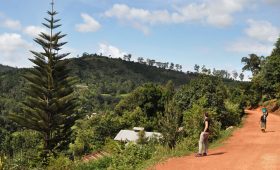Exploring Gibraltar’s Gibraltar Nature Reserve
The Gibraltar Nature Reserve, previously known as the Upper Rock Nature Reserve, is a protected area covering over 40% of Gibraltar’s land. Established in 1993, it offers a blend of natural beauty and historical significance. The reserve is a sanctuary for wildlife, including the famous Barbary macaques, and serves as a crucial stopover for migrating birds. It also provides stunning views of the surrounding regions, including Spain and Morocco.
Natural Attractions
The reserve’s landscape is characterized by its limestone cliffs and diverse flora. The Rock of Gibraltar, part of the Betic Cordillera, rises to 426 meters (1,398 feet) above sea level. Visitors can enjoy a variety of trails, from easy walks to challenging hikes, each offering panoramic views. The Mediterranean Steps is a particularly demanding trail that rewards hikers with breathtaking vistas of the Mediterranean Sea.
Key Sites to Visit:
- Windsor Suspension Bridge: Offers sweeping views of Gibraltar and the surrounding area.
- St. Michael’s Cave: A natural limestone cave with impressive stalactite and stalagmite formations.
Historical Significance
The reserve is rich in history, with landmarks dating back centuries. The Great Siege Tunnels, carved during the 18th century, played a pivotal role in Gibraltar’s defense. Visitors can explore these tunnels to learn about the British military’s strategic efforts. The Moorish Castle, a medieval fortress, provides insights into Gibraltar’s past and offers stunning views from its ancient walls.
Additional Historical Site:
The Military Heritage Centre within the reserve showcases a collection of artifacts that highlight Gibraltar’s strategic importance over the years.
Access and Transportation
Reaching the Gibraltar Nature Reserve is straightforward. The Gibraltar Cable Car, located next to the Gibraltar Botanic Gardens, offers a scenic ascent to the reserve. Once there, exploring on foot is ideal, with trails catering to various fitness levels. Comfortable shoes, water, and sunscreen are recommended due to the Mediterranean climate.
For those who prefer less walking, a shuttle bus service is available, providing easy access to the main attractions.
Optimal Visiting Times
Spring and autumn are the best times to visit, offering mild weather and fewer crowds. Summers can be hot, while winters are cooler and wetter. Visiting early in the morning or late in the afternoon can enhance the experience by avoiding peak tourist times.
While the reserve offers incredible views and historical insights, be prepared for potentially crowded conditions during peak seasons. Planning your visit during off-peak times can lead to a more enjoyable experience.




